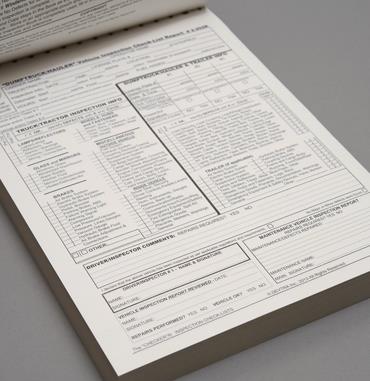If you want to minimize workplace injuries and their substantial costs, it’s essential to have safety training tailored for each type of equipment your company uses.
Every type of equipment has its own unique safety risks, and personnel can’t possibly be safe if they’re not well aware of those equipment-specific risks.
 Inspection checklists can be a great help with this training—if the checklists have all the detail necessary for each type of equipment, with all items listed in logical circle-check/walkaround order.
Inspection checklists can be a great help with this training—if the checklists have all the detail necessary for each type of equipment, with all items listed in logical circle-check/walkaround order.
Such a safety inspection checklist (e.g., The Checker) essentially becomes a “textbook.” Trainees simply follow the checklist to learn how to ensure their particular type of equipment is safe.
Safety Training Never Ends
Safety training is an ongoing effort that must be backed up in the field by mandatory processes that genuinely increase safety (and thereby gain the respect of personnel). These processes are training in themselves. Personnel need to go through safety steps over and over to internalize the importance of safety and ingrain safe habits.
Once again, inspection checklists offer assistance—they are one of those “training” processes. They have a real, immediate effect on safety while reinforcing safety training. Continually using safety checklists drives home the safety message.
Steps to Take
You can find many resources to help with your safety training, including equipment-specific training materials from The Checker.
The key to is to cover all your bases:
- Ensure all safety trainers are adequately prepared to instruct—fully understanding how the equipment works, how it’s used on the job, the risks it poses, and the appropriate safety measures to take.
- In addition to general workplace safety training, provide new employees with training specific to their job function and the equipment they’ll be using.
- Require processes (e.g., pre-use inspection checklists) that work to directly ensure safety while also building safety awareness.
- Require personnel to periodically receive additional safety training and review.
- Clearly demonstrate to all personnel that safety is a core company value!
Takeaway
To reduce injuries and safety-related costs, safety training programs should include training for the specific types of equipment personnel are using. Inspection checklists can be a valuable tool in providing and reinforcing this training.











